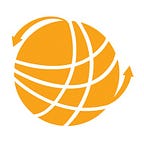If your internal high potential leadership program isn’t working, it probably comes down to one of these five reasons
Companies are lacking the leadership they need, and they know it. That’s why, over the past several years, they’ve focused so much attention on internal high potential leadership development programs.
But their efforts, which frequently have resulted in the launch of high-potential programs, have delivered less-than-stellar results. Yes, high-potential programs deliver results when done well and done correctly. However, while 65 percent of companies have internal potential leadership development programs, 68 percent say they’re not very effective. And 95 percent fail to follow-through on high-potential development plans.
In the past, the answer to fixing these programs has often been tweaks to some aspect of the program, such the definition of leadership potential. But these fixes, which tend to be limited in scope, are no longer enough. This is because the problem often is either misdiagnosed or runs deeper than realized. In turn, the steps taken to fix the program often miss the mark.
The most common mistakes
Here are five common mistakes organizations are making when it comes to their internal high potential leadership development program:
1. Your high-potential program begins and ends with the nine-box grid. Sure, it can be a valuable tool for quick reference, but over-relying on the nine-box grid for making decisions on who has potential and who doesn’t is a mistake. Instead, focus on the information gleaned from assessment data and documented performance data — the data that should be used in conjunction with a nine-box grid. This will help you get a better picture of who has potential and where development efforts should be targeted.
2. You have an unclear and narrow definition of potential. You can’t find something if you don’t know what it is you’re looking for. Most organizations have unclear or narrow definitions of potential. This creates a roadblock for anyone who doesn’t fit into this unrealistic or ambiguous definition. It also limits the pool of talent from which the organization can identify those with leadership potential.
3. You’re (unintentionally) making non-high potentials feel excluded. Employees who aren’t labeled as high potential can feel left out of development opportunities. If a person doesn’t feel their boss has confidence in them as a performer, it can easily lead to low morale, which will lead to disengagement, and, eventually, turnover.
4. You’re not accelerating potential after you identify it. Like most organizations, you’ve likely spent a huge amount of time, resources, and energy identifying the high-potential individuals on your team. You’ve also probably generated a mass of data on those individuals. That’s a great first step, but it’s not the end of the process. You need to also accelerate the potential you’ve found. That is, you need to actually do something with the data. Take, for example, the executive who willingly takes part in a talent review discussion, but can’t find time to mentor or coach the individuals whose potential needs to be fast-tracked. It’s good to know who has potential. But knowing is not enough, and action is required.
5. You’re excluding key groups from senior leadership ranks. Women make up over half the global workforce, yet they make up less than 15 percent of executive officer positions. On top of that, over 72 percent of corporate leadership roles in 16 Fortune 500 companies reviewed were held by white men. These numbers have stayed steady even with the rise of HiPo internal development programs. It should go without saying, but this is not acceptable. Aside from being unfair, low diversity suggests that the organization is not casting a broad enough net to find potential wherever it exists.
We Need More Leadership
High-potential programs started with great ambitions and have produced capable leaders for many organizations. But over time, they simply haven’t provided the quantity of leadership organizations need. By avoiding these costly mistakes, you can be sure you’re activating and realizing the potential of your entire team, and not just a select few.
Download our eBook on Developing Leadership Potential.
